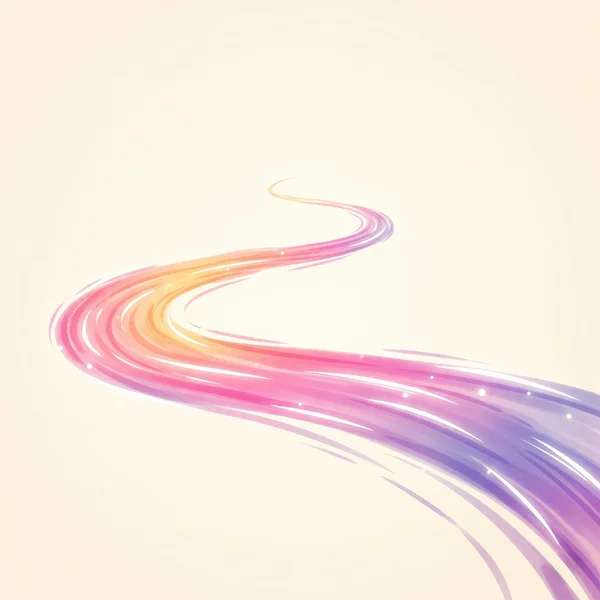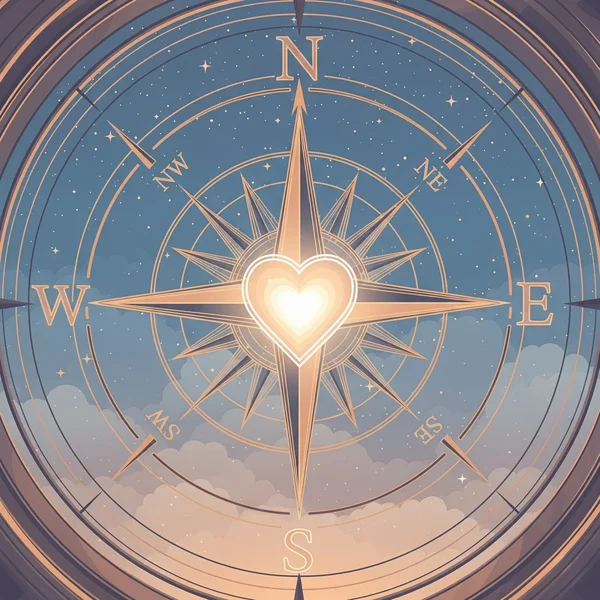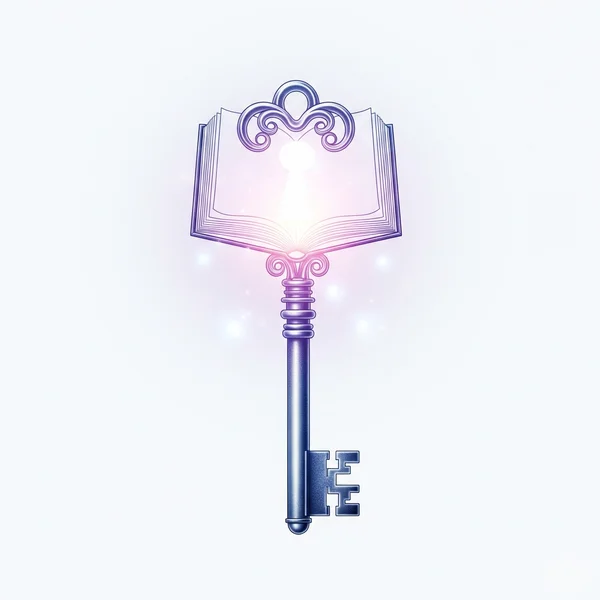Lésbica, Bi ou Heterossexual? Um Guia para o Espectro da Sexualidade
É uma pergunta que pode ecoar em sua mente tarde da noite ou surgir ao ver um casal na tela: "Por quem eu sou verdadeiramente atraída?". Se você está lutando com isso, especialmente se perguntando, "Como sei se sou lésbica ou bi?", saiba que você não está sozinha. Esta jornada de compreensão da atração é profundamente pessoal e muitas vezes complexa. Não se trata de encontrar uma resposta simples, mas de se dar a graça de explorar. Para aqueles que procuram um ponto de partida neste processo de autodescoberta, uma reflexão guiada pode ser incrivelmente útil. Você pode iniciar sua jornada com nosso teste reflexivo quando estiver pronta.

O que Exatamente é o Espectro da Sexualidade?
Muitos de nós crescemos pensando na sexualidade em caixas rígidas: você é heterossexual ou gay. Mas a experiência humana é muito mais colorida e diversa do que isso. O conceito de espectro da sexualidade sugere que a orientação sexual não é um simples interruptor de ligar/desligar. Em vez disso, é um contínuo.
Indo Além do Pensamento "Tudo ou Nada"
Imagine uma linha. Em uma extremidade está a atração exclusiva pelo gênero oposto (heterossexual), e na outra está a atração exclusiva pelo mesmo gênero (homossexual). O espectro da sexualidade reconhece que inúmeras pessoas se encontram em algum lugar entre esses dois pontos. Você pode ser principalmente atraída por mulheres, mas ocasionalmente por homens, ou sentir que sua atração muda com o tempo. Este conceito de fluidez é fundamental para se permitir sentir o que você sente sem julgamento.
A Escala de Kinsey em Poucas Palavras
Para ajudar a visualizar isso, pesquisadores como Alfred Kinsey desenvolveram escalas em meados do século XX. A Escala de Kinsey varia de 0 (exclusivamente heterossexual) a 6 (exclusivamente homossexual), com uma variedade de números intermediários para representar diferentes graus de sentimentos e experiências bissexuais. Embora não seja uma ferramenta de identificação lésbica definitiva, foi uma ideia revolucionária que ajudou o mundo a ver a sexualidade como um espectro, uma parte central da compreensão da atração hoje.
Definindo Identidades Centrais: Lésbica, Bissexual e Heterossexual
Embora os rótulos não sejam o fim de tudo, eles podem ser ferramentas poderosas para a autodescoberta e a busca por comunidade. Então, é normal questionar esses rótulos de identidade? Absolutamente. Vamos esclarecer o que esses termos comuns geralmente significam.
O que Significa se Identificar como Lésbica?
Uma lésbica é uma mulher que experimenta atração romântica, emocional e/ou sexual duradoura por mulheres. Esta identidade é um pilar da cultura e comunidade feminina queer, representando uma orientação completa e gratificante centrada nas mulheres.
Compreendendo a Bissexualidade: Atração por Mais de Um Gênero
Bissexualidade é um termo amplo para pessoas que são atraídas por mais de um gênero. Isso não significa que a atração seja dividida 50/50. Uma mulher bissexual pode ser 90% atraída por mulheres e 10% por homens, ou descobrir que suas atrações mudam. É uma identidade válida e completa por si só, não um "degrau" para outra.
Reconhecendo a Heterossexualidade no Espectro
Uma mulher heterossexual é primariamente atraída por homens. Mesmo dentro desta identidade, há espaço para nuances. Tudo faz parte do mesmo espectro humano de conexão.
A Questão "Sou Bi ou Lésbica?": Explorando as Nuances

Este é frequentemente o cerne da questão para muitas mulheres que estão questionando sua sexualidade. É uma pergunta profundamente pessoal, e a resposta geralmente vem da introspecção em vez de uma lista de verificação. Se é aqui que você está, você está em um espaço seguro de exploração muito comum e válido.
Sinais Comuns de que Você Pode Estar Questionando
- Você se pega sonhando acordada com relacionamentos com mulheres.
- Você sente uma conexão emocional mais forte ou um "brilho" com mulheres do que com homens.
- Você tentou sair com homens, mas sentiu como se estivesse "interpretando um papel".
- Você sente um senso de pertencimento ou reconhecimento ao ver casais lésbicos na mídia.
O Ciclo Bissexual vs. Preferência
Algumas pessoas bissexuais experimentam o que é informalmente chamado de "bi-ciclo", onde sua atração pode pender mais fortemente para um gênero por um período antes de mudar. Isso é diferente de uma preferência. Você pode ser bissexual e ainda ter uma forte preferência por mulheres. O ponto principal é reconhecer o potencial de atração por mais de um gênero, mesmo que não esteja sempre ativo. Este é um ponto central para quem considera um teste para identificar se sou bi ou lésbica.
Como a Experiência Pessoal Molda Sua Identidade
Em última análise, somente você pode definir sua identidade. Seus relacionamentos passados, sentimentos e experiência pessoal são todos pontos de dados válidos. O mais importante é ser honesta consigo mesma sobre o que lhe traz alegria, excitação e uma sensação de paz.
Além dos Rótulos: A Importância da Atração Romântica vs. Sexual
Para adicionar outra camada de bela complexidade, nossas atrações não são apenas uma coisa. Qual é a diferença entre atração romântica e sexual? Entender isso pode ser um divisor de águas.
O que é Atração Romântica?
Atração romântica é sobre por quem você quer se apaixonar. É sobre com quem você pode imaginar sair, compartilhar sua vida e construir uma intimidade emocional.
O que é Atração Sexual?
Atração sexual é sobre quem você deseja fisicamente. É a "química" ou o impulso físico que você sente por alguém.
Quando Eles Não se Alinham (e Por Que Tudo Bem)
Para muitas pessoas, essas duas se alinham perfeitamente. Mas para algumas, não. Você pode ser sexualmente atraída por vários gêneros, mas apenas romanticamente atraída por mulheres (bissexual, homorromântica). Tudo bem. Não há regras que você precise seguir. Sua combinação única de sentimentos é o que faz você, você.
Como Nosso 'Teste para Lésbicas' Pode Ser uma Ferramenta para Sua Autodescoberta

Depois de ler tudo isso, você pode estar pensando: "Isso é muito para processar!" É aí que uma ferramenta pode ajudar. Não é uma resposta mágica, mas um espelho para refletir seus próprios pensamentos.
O que Esperar do Nosso Quiz do Teste para Lésbicas
Nosso free and private quiz do teste para lésbicas é projetado como uma série de perguntas reflexivas. Ele abrange seus sentimentos, fantasias e experiências de maneira gentil e sem julgamentos. Ajuda você a organizar seus pensamentos e a ver padrões que talvez não tenha notado.
Usando Seus Resultados para Reflexão, Não Como Resposta Final
O resultado de qualquer teste de lésbica, bissexual ou heterossexual deve ser visto como um guia, não um destino. É um instantâneo dos seus sentimentos neste momento. Use-o como um ponto de partida para mais escrita em diário, leitura ou conversas com amigos de confiança. O objetivo é clareza e autoaceitação, não um rótulo rígido.
Conclusão: Abrace Sua Jornada, Onde Quer Que Ela Leve
Explorar sua sexualidade é um ato profundo de amor próprio. Quer você se identifique como lésbica, bissexual, heterossexual ou prefira não usar nenhum rótulo, sua jornada é válida. O mais importante é ser gentil consigo mesma e permitir espaço para que seu verdadeiro eu emerja. O processo de questionamento não é um sinal de confusão, mas um sinal de coragem e autenticidade.
Como tem sido sua jornada de autodescoberta? Convidamos você a compartilhar seus pensamentos (anonimamente, se desejar) nos comentários abaixo para criar um espaço seguro de apoio para todos.
Perguntas Frequentes sobre Sexualidade
Minha sexualidade pode mudar com o tempo?
Sim, absolutamente. Muitas pessoas experimentam o que é conhecido como fluidez em sua atração. Sua identidade hoje pode não ser a mesma de cinco anos atrás ou o que será no futuro, e isso é completamente normal e válido.
É normal ser mais atraída por um gênero do que por outro se sou bissexual?
Sim, isso é muito comum. A bissexualidade não exige uma divisão 50/50 na atração. Ter uma preferência é uma parte central da experiência bissexual para muitas pessoas. Isso não torna sua identidade menos válida.
E se eu não sentir que nenhum rótulo se encaixa em mim?
Tudo bem! É normal não ter um rótulo? Sim. Você não precisa escolher um. Algumas pessoas se identificam como "queer" como um termo guarda-chuva, enquanto outras preferem não usar rótulos. O objetivo é se entender, não se encaixar em uma caixa. Se você ainda estiver explorando, ferramentas como nosso teste 'sou lésbica' podem ser um passo útil e sem pressão.